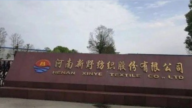【新唐人2011年4月21日讯】湄公河流域国家长期以来遭受旱、涝灾之苦,据调查,这与中共在澜沧江兴建水坝有关,也影响了这些国家的生态和经济。地质学者杨勇认为,这不只是一个有关环境和资源的问题,已经成了政治问题。他建议各国要将资讯透明化,并且要做好水文调查和资料共享的协调机制。
4月19号,湄公河四国委员会针对湄公河修建水坝一事,没有达成共识。老挝原本计划兴建的沙耶武里水坝和水电站,也因为会员国意见分歧而喊卡。
湄公河与亚马逊河、刚果河并列世界自然资源最丰富的三条大河。湄公河上游在中国境内叫澜沧江。“国际河流”组织(International Rivers)表示,中国在湄公河上游的大坝及航道的建设,威胁着这个复杂的生态系统。
连续几年,湄公河下游国家遭受严重的旱、涝灾害。《自由亚洲电台》报导,环保组织在湄公河流域国家所作的调查显示,目前湄公河干流水位下降以及流域改道,所造成的水文灾害,与中共在上游—澜沧江修建的多座水利工程有关。
据了解,中国在澜沧江建成运行的水坝有4~5座,在建的有3~4座,西藏境内规划的情况不明,但少说也在15座左右。而水坝的截水能力对于环境的影响,一直受到沿江各国的关注。澜沧江的这个问题至少存在有10年了。
湄公河流域的渔业资源,提供了数百万人的生计。但湄公河流域国家在去年,遭受了50年以来最为严重的一次旱灾。湄公河下游的农业、渔业和航运都受到严重影响。世界主要稻米生产国泰国和越南,水稻产量因为缺水而锐减,老挝和柬埔寨船只也都停航。
美国佛罗里达州环保专家林俊达教授说过,发展经济与保护环境要并顾。
原美国环保署中国专案主任杨兴泰向《自由亚洲电台》表示,有关跨境河流的水利开发,中国在强调与周边国家发展关系的同时,也必须考虑其他流域国家的利益。中国和周边国家要维持良好的关系不能单一方面去开发,中国应该将国内开发资讯公开,让这些国家了解和满意。否则变成一个国际性的问题,对中国本身并不好。
国际自然保护联盟水资源与自然保护协调员伯格卡普也指出,如果一方面拓宽河道改善了上游的航运,但另一方面影响到下游国家渔民的生活,使他们的收入大为减少。那么就要对计划作进一步的改进,既可以拓宽河道,又不影响到环境。
因此,杨勇认为,由流域各国参与的共同协调机制以及资讯的公开,才是保证湄公河流域合理开发的必要条件。
新唐人记者李庭、孙宁综合报导。
Mekong’s Ecosystem Needs Protection
Nations on the Mekong River have long suffered
from drought and flood. It is related to the dams
built by the Chinese Communist Party (CCP)
on the Lancang River, which has also affected
the economy and ecosystems of these countries.
Geologist Yang Yong believes that this
has become a political issue. He suggested
to enhance the hydrographic survey
and information sharing mechanism
in these countries.
The 4-nation Mekong River Commission did not
reach dam construction agreement on April 19,
Laos’ originally planned dam
and hydropower station were withheld
due to constituent members’ objection.
Mekong, Amazon and Congo Rivers are three
major revers in the world of the most abundant
natural resources. The upstream Mekong River
is called the Lancang river. International Rivers
said, that China’s dam construction upstream
threatens the complex ecosystem.
In recent years, Mekong downstream nations
have suffered from severe drought and flood.
According to RFA, surveys suggested
that drop in water level and river path diversions
on Mekong have caused hydrological disasters,
related to the CCP’s dam constructions
on the Lancang river.
China has 4-5 dams already built and 3-4 dams
under construction on the Lancang River,
with at least another 15 dams in Tibet.
The effect of these dams on the environment
is a concern for all the downstream nations.
The problem with the Lancang River
is at least 10 years old.
Mekong River’s fish resources create jobs for
millions of people. Last year Mekong countries
suffered the most severe drought in 50 years,
which considerably affected their agriculture,
fisheries and water transportation.
Thailand and Vietnam incurred sharp reduction
in rice production due to water shortage.
Ships are suspended in Laos and Cambodia.
Prof. Lin Junda, Florida’s environmental expert,
said that economic development
and environmental protection should co-exist.
Yang Xingtai, former director of the EPA’s
China task force, said to RFA, that China
should maintain a good relationship
with its neighboring countries by considering
the interests of other countries on the river.
China should not unilaterally stress
on its development, but should open up
its development information to other countries
for their understanding. Otherwise, the issue
may become international,
which is detrimental to China.
The coordinator of IUCN on water resources
and natural protection said, that if the waterway
improvement enhances the water transportation
upstream, but impacts negatively the fishermen
downstream, causing their incomes to reduce,
then the upstream plan needs improving
so that the waterways can be widened
without deteriorating the environment.
Yang believes that a coordination mechanism
among all the nations and information disclosure
are necessary to guarantee
reasonable development of the Mekong River.
NTD reporters Li Ting and Sun Ning































